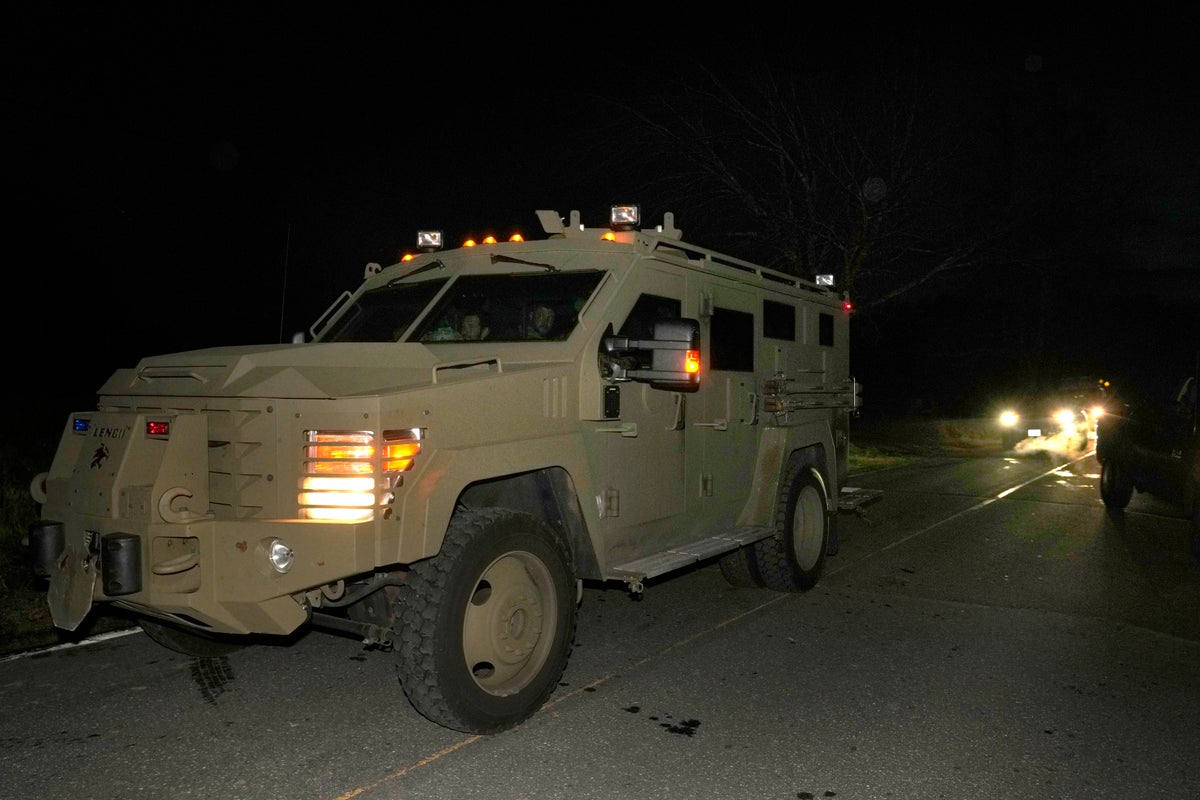
Hundreds of law enforcement officers descended on southern Maine this week, searching for a military-trained outdoorsman who vanished after police say he killed 18 people in two separate shootings Wednesday.
The deceased ranged in age from 14 to 76. A teen bowler, a shipbuilder and a sign language interpreter were among the dead.
The search for Robert Card, 40, of Bowdoin, involved both old-fashioned footwork and advanced technology, but for almost two days after the shooting there was still no sign of Card by air, water or land.
Then, Friday evening, authorities said Card was found dead. Card is believed to have died of a self-inflicted gunshot wound, a law enforcement official told The Associated Press. The official was not authorized to discuss details of the investigation publicly and spoke to the AP on condition of anonymity.
Here is a look at the agencies involved and the resources they used in the search for Card:
SEARCHING BY WATER
The most visible search efforts Friday focused on the Androscoggin River near the town of Lisbon Falls, Maine. Card's vehicle was located at a boat ramp nearby.
Maine Public Safety Commissioner Mike Sauschuck said the search included “air resources” flying over the river and attempting to look through the water from above to identify the best areas to send divers.
Dive teams with the state police and other agencies searched from below, Sauschuck said, with some of the divers being towed behind boats. Other equipment included trawlers, which use nets or other devices to sift through the water, and a robotic submarine equipped with sonar to detect objects using sound waves.
Maine's wildlife game wardens were among the officers taking part in the water search. A regional power company that operates two dams on the river lowered the water level in the area to assist searchers, Sauschuck said.
Others combed the shoreline along the river, he said, meticulously searching for any clues on the river banks or nearby.
On Thursday morning, the U.S. Coast Guard sent out a patrol boat along the Kennebec River but found nothing out of the ordinary after hours of searching, Chief Petty Officer Ryan Smith said.
SEARCHING BY LAND
A spokesperson for Maine's Department of Public Safety did not immediately respond to questions about the exact types of tools that were used for the land search.
David Carter, a criminal justice professor and the director of the intelligence program at Michigan State University, said law enforcement agencies typically try to narrow a search area by analyzing what is known about a suspect, interviewing family or friends about the suspect’s habits, and scouring reports and law enforcement tips for any suspicious activity in the region like stolen vehicles or missing food or clothing.
During a Friday afternoon press conference, Sauschuck said police received more than 530 tips and leads and were looking at each one.
Some were reported sightings, and others have been “as simple as, ‘I’ve got a vacant house that’s in this location,’ ‘I own a barn that I’m afraid to go into,’ ‘There’s something over here that concerns me,’” he said.
A digital tip line set up by the FBI so that people could submit security camera footage and other media that could reveal clues about the shooting or Card's movements had received more than 100 submissions, Sauschuck said.
Agencies often use artificial intelligence software with facial recognition capability to go through security videos, street light cameras or other video footage, Carter said.
“That AI technology can be used to search the video faster," Carter said. “It’s not definitive, but it helps narrow it down.”
License plate readers can also help track vehicles that might be used by the suspect, he said.
SEARCHING BY AIR
Colder temperatures expected this weekend would have made it easier to use thermal search equipment, Sauschuck said during the afternoon press conference.
“If it's sunnier, you can get a better look into the water," he said. “If it's colder, there's an argument that your thermal style of equipment, where you're looking for body temperatures or heat signatures, may work better in that scenario.”
Infrared cameras and other search-and-track thermal imaging equipment can be especially helpful for searching forested areas by air, Carter said.
“Helicopters and drones, given how wooded it is there, using infrared technology can help you look through the canopy,” Carter said. “It's going to pick up your body temperature. But you're also going to locate deer and squirrels, all sorts of things.”
Neighbors said Card knew the land well, because his family has lived in the area for generations and various family members own hundreds of acres in the region.
Flight tracking websites showed state police helicopters flying over the region in the days after the shooting.
PULLING IT ALL TOGETHER
With a multitude of agencies assisting in the search, communication is key, Carter said, and that's where fusion centers come into play.
The Maine Department of Inland Fisheries and Wildlife paused deer hunting season in the area and the Canada Border Services Agency issued an “armed and dangerous” alert to officers stationed along the U.S. border. State and federal law enforcement officers from the FBI, the Lewiston Police Department and other agencies are carrying out the footwork, paperwork and analysis.
Federal agents searched several properties associated with Card, and investigators were analyzing his financial information and digital fingerprint, including social media posts.
The Maine Information and Analysis Center serves as the state's fusion center, tasked with providing analytical and investigative support for complex crimes. That often means connecting the dots for various agencies involved in large-scale searches, Carter said.
“You can only do so much with technology. You really need an analyst at the fusion centers who can say, ‘these points correlate,’" Carter said. “The analysts can stay on top of it all and keep it all together.”







